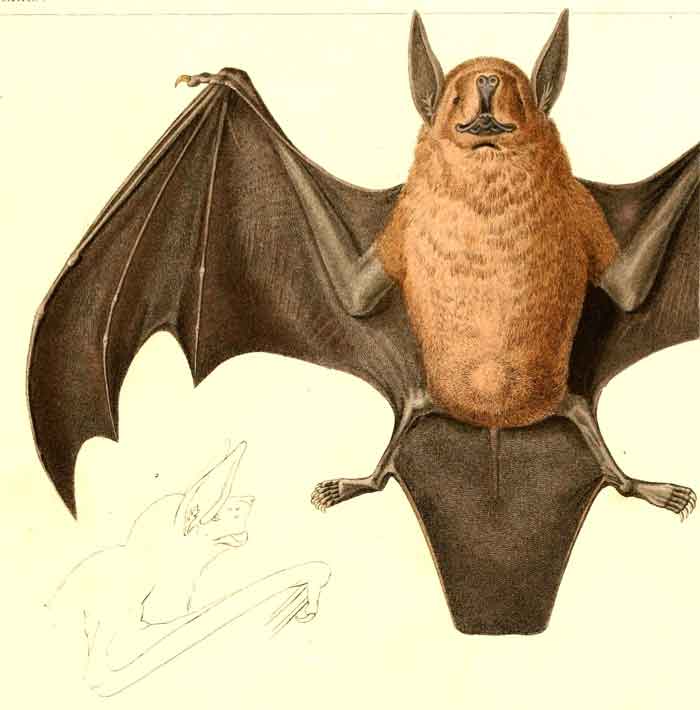Superregnum: Eukaryota
Cladus: Unikonta
Cladus: Opisthokonta
Cladus: Holozoa
Regnum: Animalia
Subregnum: Eumetazoa
Cladus: Bilateria
Cladus: Nephrozoa
Superphylum: Deuterostomia
Phylum: Chordata
Subphylum: Vertebrata
Infraphylum: Gnathostomata
Megaclassis: Osteichthyes
Cladus: Sarcopterygii
Cladus: Rhipidistia
Cladus: Tetrapodomorpha
Cladus: Eotetrapodiformes
Cladus: Elpistostegalia
Superclassis: Tetrapoda
Cladus: Reptiliomorpha
Cladus: Amniota
Cladus: Synapsida
Cladus: Eupelycosauria
Cladus: Sphenacodontia
Cladus: Sphenacodontoidea
Cladus: Therapsida
Cladus: Theriodontia
Cladus: Cynodontia
Cladus: Eucynodontia
Cladus: Probainognathia
Cladus: Prozostrodontia
Cladus: Mammaliaformes
Classis: Mammalia
Subclassis: Trechnotheria
Infraclassis: Zatheria
Supercohors: Theria
Cohors: Eutheria
Infraclassis: Placentalia
Cladus: Boreoeutheria
Superordo: Laurasiatheria
Cladus: Scrotifera
Ordo: Chiroptera
Subordo: Yangochiroptera
Superfamilia: Noctilionoidea
Familia: Noctilionidae
Genus: Noctilio
Subgenus: Noctilio (Dirias)
Species: Noctilio albiventris
Subspecies (3): N. a. albiventris – N. a. cabrerai – N. a. minor
Name
Noctilio albiventris Desmarest, 1818
Type locality: Brazil, Bahia, Rio São Francisco.
References
Primary references
Desmarest, 1818. Nouv. Dict. Hist. Nat., Nouv. ed., 23: 15.
Additional references
Carla I. Aranguren, José A. González-Carcacía, Helios Martínez & Jafet M. Nassar 2011: Noctilio albiventris (Noctilionidae), a Potential Seed Disperser in Disturbed Tropical Dry Forest Habitats. Acta Chiropterologica 13(1): 189–194. DOI: 10.3161/150811011X578732
Gonçalves, F., R. Munin, P. Costa & E. Fischer. 2007: Feeding habits of Noctilio albiventris (Noctilionidae) bats in the Pantanal, Brazil. Acta Chiropterologica 9: 535–538.
Kalko, E.K.V., H.-U. Schnitzler, I. Kaipf & A.D. Grinnell. 1998: Echolocation and foraging behavior of the lesser bulldog bat, Noctilio albiventris: preadaptations for piscivory? Behavioral Ecology Sociobiology 42: 305–319.
Links
Noctilio albiventris in Mammal Species of the World.
Wilson, Don E. & Reeder, DeeAnn M. (Editors) 2005. Mammal Species of the World – A Taxonomic and Geographic Reference. Third edition. ISBN 0-8018-8221-4.
Conservation status: IUCN: Noctilio albiventris (Least Concern)
Vernacular names
English: Lesser Bulldog bat
português: Morcego-buldogue

Noctilio albiventris albiventris
The lesser bulldog bat (Noctilio albiventris) is an insectivorous and occasionally carnivorous bat of the (Neotropics), ranging through Central America and northern South America. Some unique characteristics of the bat include, large feet that are used to rake the surface of water to capture prey, and precise echolocation. Occasionally, the larger bats catch and consume small fish (the most closely related species, the greater bulldog bat, is known for its fishing ability).
Description
The lesser bulldog bat is a sexually dimoprhic species; males are typically bright red and females are typically dull brown.[2] Furthermore, coloration varies between individuals among the same sex, and between different populations.[3] They have a length of about three inches (7.5 cm), a forearm length of 2+1⁄2 inches (6.4 cm), and weight of about one ounce (30 grams).[3] The bats plump lips and chin that has well-developed cross ridges give rise to the bats "bulldog" like appearance.[3] The lesser bulldog bat has large feet that are claw-like and can be used capture prey.[3]
Habitat
The bats prefer terrestrial habitats and they live near water or damp locations, residing in hollow trees or domestic dwellings.[1] The locations that they can be found in includes: Argentina; Belize; Bolivia, Plurinational States of; Brazil; Costa Rica; Ecuador; El Salvador; French Guiana; Guatemala; Guyana; Honduras; Mexico; Nicaragua; Panama; Paraguay; Peru.[1]
Feeding
The species prefers to feed predominantly on insects, catching them while flying over water. Studies on Costa Rican population say that the bats also consume tree pollen.[4]
Echolocation
Noctilio albvirentis is known for utilizing its echolocation to locate prey such as insects. The unique feature of their echolocation is how they use it to locate their prey.[5] As they skim across the water they will bombard the water with their vocalization and when they detect a disturbance of the vocalization they move to the disturbance.[5] Additionally, since the lesser bulldog bat prefers to forage in small groups they also use echolocation to communicate during foraging.[5]
Development and lifespan
They live about ten years and reach sexual maturity in one year.[2] Ovulation occurs in the ovary the gestation period lasts about 4 to 5 weeks.[2] Baby bats are capable of very limited vocalization, and they cannot begin flight until 5 to 6 weeks after birth.[5] Mother bats will feed their young until the babies are three months old.[5]
Predators
Predation on bats is uncommon however large birds are known to prey upon bats.[6] One distinct bird that preys on the lesser bulldog bat is The Great Rufous Woodcreeper. The woodcreeper will invade the bats roost and take the bat from its habitat.[6] Upon capture the Woodcreeper pecks the bat with its sharp beak until the bat dies.[6] Other predators of the bat include hawks, falcons, owls, and motmots.
See also
Bulldog bat
Microchiroptera
References
Barquez, R.; Perez, S.; Miller, B.; Diaz, M. (2015). "Noctilio albiventris". IUCN Red List of Threatened Species. 2015: e.T14829A22019978. doi:10.2305/IUCN.UK.2015-4.RLTS.T14829A22019978.en. Retrieved 11 November 2021.
Lundrigan B., & Kamarainen A., (2003). Noctilio albiventris lesser bulldog bat. https://animaldiversity.org/accounts/Noctilio_albiventris/
Hood, C. S., & Pitocchelli J., (1983). Noctilio albiventris. American Society of Mammalogists,197, 1-5
Vaughan, Terry A. (1978). Mammalogy. W.B. Saunders Company. ISBN 0-7216-9009-2.
Brown, P. E., Brown, T. W., & Grinell, A. D., (1983). Echolocation, development, and vocal communication in the lesser bulldog bat, Noctilio albiventris. Behavioral Ecology and Sociobiology, 13(4), 287-298
Camargo, P. H. S. A., & Laps, R. R., (2016). Predation on Lesser Bulldog Bat (Noctilio albiventris Noctilionidae) by Great Rufous Woodcreeper (Xiphocolaptes major Dendrocolaptidae) The Wilson Journal of Ornithology 128(4),903–912
Retrieved from "http://en.wikipedia.org/"
All text is available under the terms of the GNU Free Documentation License

